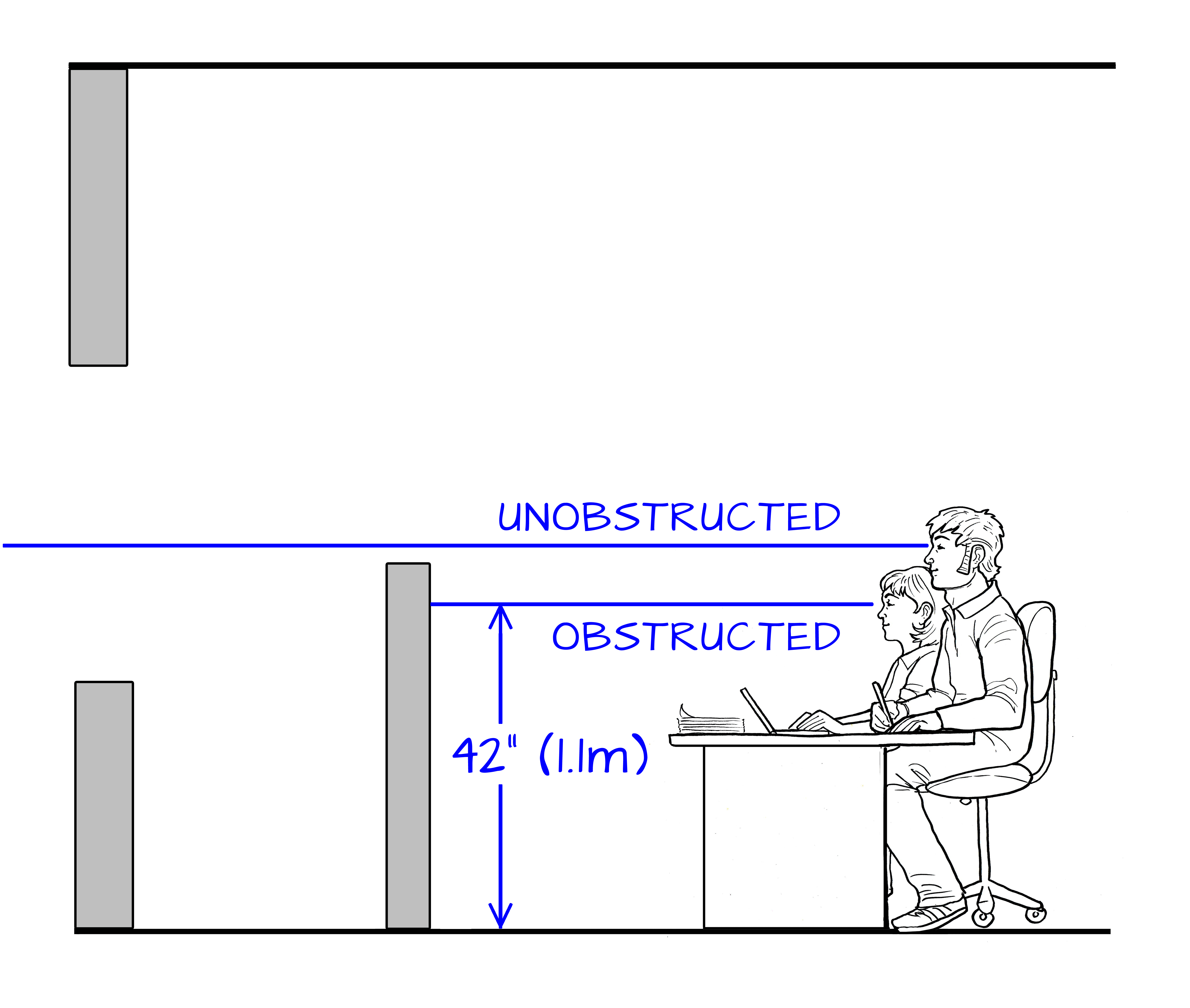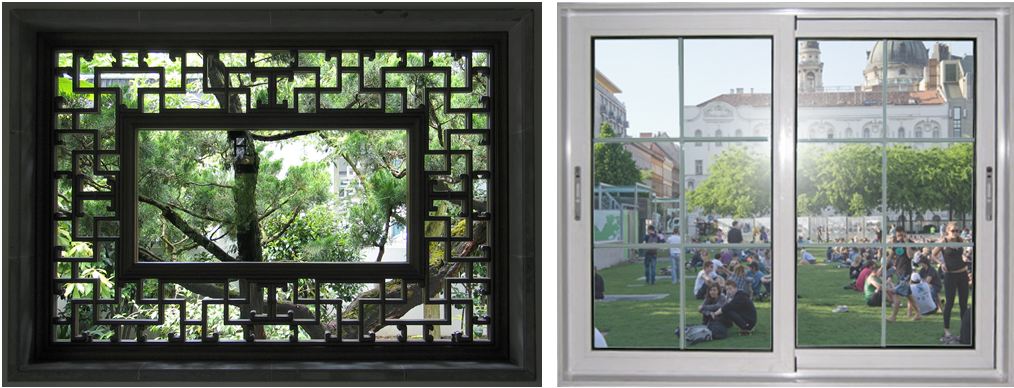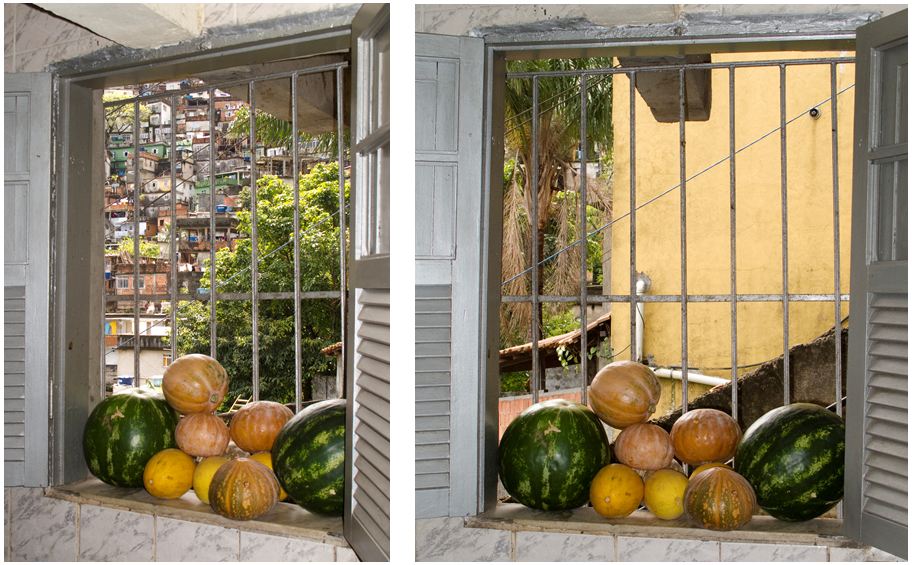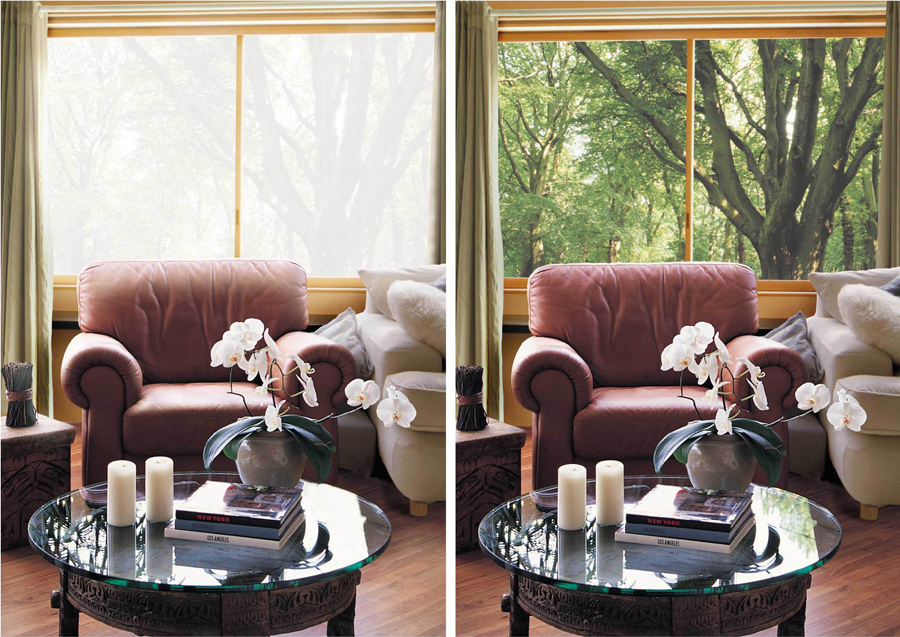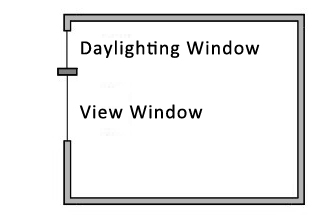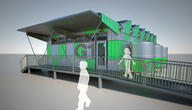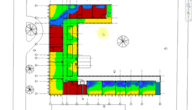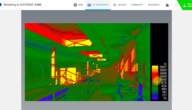You are here
Views are the ability for building occupants to see landscape, objects, and people outside the building. For many occupants, the outlooks from their space or public areas are a major factor in their enjoyment of the site and it can add considerably to the ambience of a building. In addition, views of nature and of social spaces have been shown to improve worker productivity, student test scores, and people's health.
Views are measured by drawing a line of sight from a location in the building to any exterior windows; if the line of sight to an exterior window is unbroken, that location has a view. The line of sight must be drawn at the appropriate height for occupants; for instance, typical office workers or students are usually sitting, with eye level assumed to be 42" (1.1m) above floor level by some building rating systems1.
Views should not be obstructed by furniture or walls in the room.
While some people may be tall enough to see over obstructions, an average height should be assumed.
In order to be considered a view, the window must provide a reasonable vantage point outside the building. One rule1 considers view windows ("vision glazing") to be any glazing above 30" (.75m) and below 90" (2.3m) from the finished floor in a room. Skylights and very high windows don’t count.
View glazing must be within certain heights to see out of it.
Building massing, orientation, and window locations should attempt to maximize views of natural features or social spaces, and minimize views of support facilities.
Views of nature and social space
Views with higher degrees of complexity and change are more engaging than simple static views. For instance, views of the horizon and landscape are better than views of the sky alone; views of public squares that are actively populated are better than views of empty courtyards; views of blank walls scarcely count as views at all.
People generally prefer wider apertures for views, and dislike framing or bars that break up the view. If a view must be broken up, vertical framing is less objectionable than horizontal framing.
Two angles on the same view, with more and less complexity;
also showing vertical bars breaking up the view
Glare in Views
Views of sunrise or sunset and views of highly reflective surfaces, such as snow, water, or mirrored-glass buildings, can cause excessive glare. Occupants should be able to shield themselves from the glare of these views using shades or other means, or windows should be placed relative to occupants to avoid such views.
Glare mitigated by tinted windows
View apertures can use glazing properties that minimize glare while still allowing clear views. Visual light transmittance can be low (even .3 or lower) while still affording excellent views. The main concern is that most occupants dislike looking out through colored windows, so they prefer neutral tones in the tinting. However, some tints can be found pleasing.
Daylighting vs. Views
View windows are often separate from daylighting windows, because the placement, area, and glazing properties that are optimal for daylighting are often not optimal for views, and vice-versa. See the daylighting strategies for the difference between view and daylighting apertures.
Daylighting window vs. view window
1 LEED EQc8.2 Daylight and Views - Views for 90% of spaces

